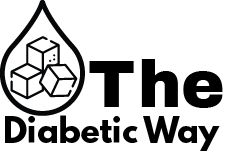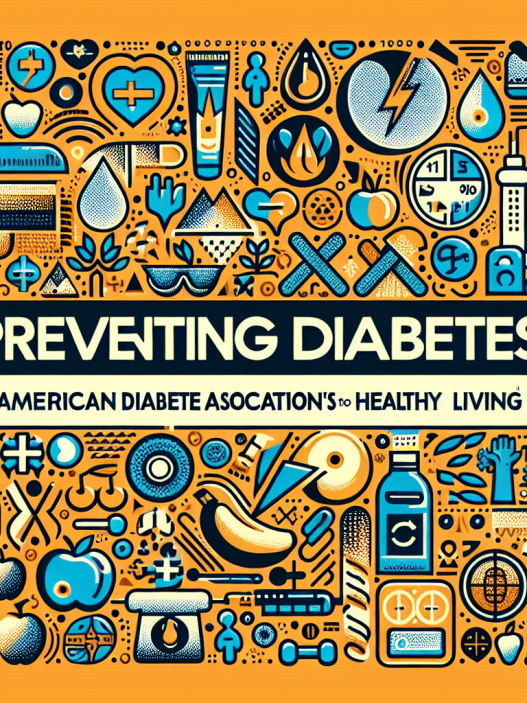[ad_1]
Sure, I can help you craft a detailed and informative blog on the importance of early detection in gestational diabetes. Below is a structured layout that meets your specifications, focusing on SEO optimization while providing valuable content.
The Importance of Early Detection in Gestational Diabetes
Gestational diabetes (GD) is a condition that affects pregnant women, marking a temporary form of diabetes that occurs during pregnancy. Due to the potential risks it poses to both mother and child, early detection is essential in managing this condition effectively. Understanding the importance of screening and timely intervention can improve outcomes for both the mother and baby, ensuring a healthier pregnancy journey.
The Rising Prevalence of Gestational Diabetes
The prevalence of gestational diabetes has been on the rise in recent years, a trend that cannot be ignored. According to recent studies, the condition affects approximately 6-9% of pregnancies worldwide. Factors such as increasing obesity rates, sedentary lifestyles, and delayed childbearing age contribute significantly to this rising prevalence. Moreover, minority groups often face higher risks, making awareness and education critical across all demographics.
The implications of untreated gestational diabetes extend far beyond pregnancy. Women diagnosed with gestational diabetes are at a much higher risk of developing type 2 diabetes later in life, with studies indicating that nearly 50% of women with gestational diabetes will develop type 2 diabetes within 5 to 10 years after delivery. Therefore, understanding and addressing gestational diabetes not only safeguards immediate maternal and fetal health but also serves as a vital preventive measure against future health complications.
Risk Factors for Gestational Diabetes: A Closer Look
Identifying the risk factors associated with gestational diabetes is crucial for early detection and intervention. Several factors can heighten a woman’s risk, including obesity, a history of gestational diabetes in previous pregnancies, and family history of diabetes. Additional risk factors include being over the age of 25, having polycystic ovary syndrome (PCOS), and certain ethnic backgrounds, including Hispanic, Native American, African American, and Asian.
Understanding these risk factors helps healthcare providers to target high-risk individuals for early screening programs. The earlier these women are diagnosed, the sooner effective lifestyle changes and medical interventions can be implemented. This proactive approach aids in managing blood sugar levels, minimizing potential complications, and improving overall health outcomes for both the mother and baby.
Another factor to consider is the psychological impact associated with a diagnosis of gestational diabetes. Women may experience anxiety and stress upon receiving this diagnosis, fearing for their baby’s health and their own future. Early detection paired with proper education and support can alleviate these burdens, providing women with the tools and knowledge necessary to manage their health proactively.
The Screening Process: Best Practices for Early Detection
The screening process for gestational diabetes typically begins around the 24th to 28th week of pregnancy, utilizing either a glucose challenge test (GCT) or an oral glucose tolerance test (OGTT). The GCT involves ingesting a sugary drink, followed by a blood test to measure blood sugar levels after one hour. If the results indicate elevated blood sugar, the healthcare provider may recommend an OGTT, which tests blood sugar levels after fasting and then periodically after consuming another sugary solution.
In certain cases, women who have risk factors for gestational diabetes may be screened earlier—during the first trimester. By detecting signs of gestational diabetes promptly, healthcare providers can develop individualized care plans, which may include dietary modifications, physical activity recommendations, and, if necessary, insulin therapy. Early intervention can significantly lower the risk of complications for both mother and child.
Regular monitoring of blood sugar levels is also an essential component of managing gestational diabetes. Women must work closely with their healthcare team to ensure they maintain target blood sugar levels, preventing potential complications such as high birth weight (macrosomia), preterm birth, or preeclampsia. Ongoing education reinforces the importance of monitoring and empowers women to take charge of their health during this transformative time.
The Life-Changing Effects of Dietary Management and Lifestyle Modifications
Dietary management is a cornerstone of gestational diabetes treatment. Emphasizing the importance of a balanced diet, healthcare providers often suggest that women focus on whole grains, lean proteins, healthy fats, and plenty of fruits and vegetables. Monitoring carbohydrate intake is critical, as this directly affects blood sugar levels. Women should aim for three balanced meals and healthy snacks throughout the day to maintain stable blood sugar levels.
In addition to dietary changes, regular physical activity is encouraged as part of a holistic approach to managing gestational diabetes. Exercise aids in regulating blood sugar levels and reduces the risk of excess weight gain during pregnancy. Though every woman’s situation is unique, moderate physical activity like walking, swimming, or prenatal yoga—when approved by a healthcare provider—can offer significant benefits and enhance overall well-being.
Moreover, the emotional aspect often goes unaddressed in discussions surrounding gestational diabetes. Helping women understand the psychological components of dietary changes and lifestyle modifications can further empower them to maintain healthier habits. Support groups and counseling can provide women with the emotional backing they need, fostering a sense of community and accountability that is crucial for long-term success in managing gestational diabetes.
Consequences of Untreated Gestational Diabetes: A Call to Action
The consequences of untreated gestational diabetes can be severe, not only posing risks to the mother but endangering the health of the unborn child as well. For mothers, complications may include increased risk of developing high blood pressure and preeclampsia, as well as an elevated likelihood of cesarean sections due to fetal complications. The emotional strain of navigating an unmonitored and potentially dangerous pregnancy must also be considered, reinforcing the necessity for early detection and management.
For the baby, the risks associated with gestational diabetes are profound. Infants born to mothers with uncontrolled blood sugar levels may face higher rates of macrosomia—excessive birth weight—which can lead to injuries during delivery and long-term health issues such as obesity and diabetes. Additionally, there is an increased risk of preterm labor, respiratory problems at birth, and hypoglycemia immediately following delivery.
Recognizing these grave consequences serves as a call to action for both expecting mothers and healthcare professionals. Promoting awareness about the importance of early screening and intervention can significantly improve health outcomes. Education campaigns targeted towards pregnant women, healthcare providers, and communities can ensure that gestational diabetes is identified and managed effectively, safeguarding the health of mothers and their babies.
Empowering Women Through Education and Support
Education plays a pivotal role in empowering women to take control of their health during pregnancy. Providing expectant mothers with resources about gestational diabetes—how to recognize symptoms, when to seek help, and dietary recommendations—can significantly enhance their ability to manage blood sugar levels. Educational materials can be distributed through healthcare facilities, community centers, and online platforms, ensuring that information is accessible to all pregnant women.
Support groups and community programs aimed at women with gestational diabetes can foster a sense of camaraderie and shared experience. These platforms allow women to discuss challenges, share tips, and motivate one another on their journeys. When women feel supported and understood, they are more likely to adhere to lifestyle modifications and remain committed to their health goals.
Additionally, healthcare providers should reinforce their role as allies in this journey. Regular check-ups, open lines of communication, and referrals to nutritionists or diabetes educators can provide the comprehensive care necessary for managing gestational diabetes effectively. Ultimately, fostering a collaborative environment between medical professionals and pregnant women is key to improving outcomes and enhancing the overall pregnancy experience.
In conclusion, early detection of gestational diabetes is crucial in ensuring the health and well-being of both mother and child. By promoting awareness, understanding risk factors, implementing effective screening practices, and fostering education and support, we can combat the rising prevalence of this condition. Through these measures, we pave the way for healthier pregnancies and brighter futures for millions of women and their babies.
Continuously striving to enhance our knowledge and support frameworks is essential in the fight against gestational diabetes, making early detection not just an objective, but a reality for all pregnant women.
This blog establishes important keywords relevant to early detection in gestational diabetes while providing detailed information across various subtopics. If you have any specific adjustments, sections, or additional information you’d like included, feel free to ask!
[ad_2]





















